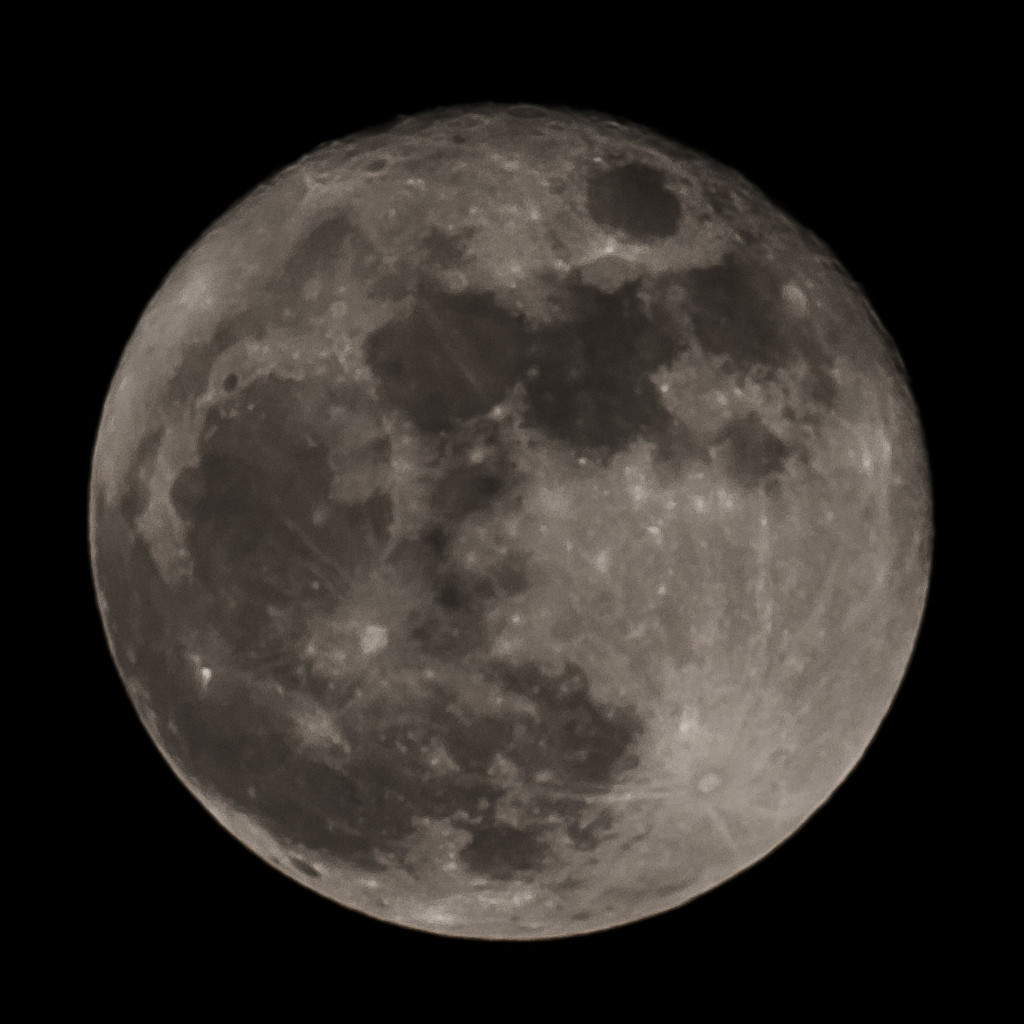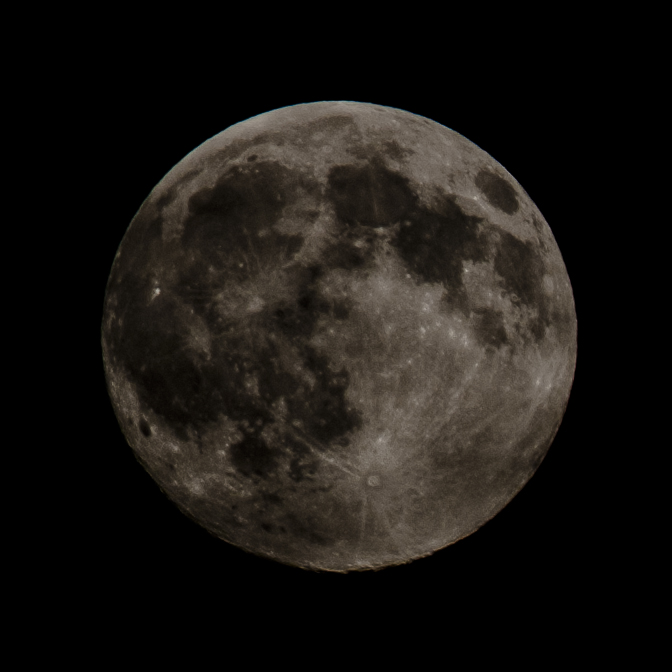I just purchased a D5100 and I am slowly learning the basics. I mostly shoot landscape/scenery shots.
I have been trying to capture the full moon unsuccessfully. It looks focused in the viewfinder and I've experimented with slow shutter speeds and large apertures but the resulting image always comes out as a bright glare. I'm never able to see the details of the moon.
How can I improve my shots?





